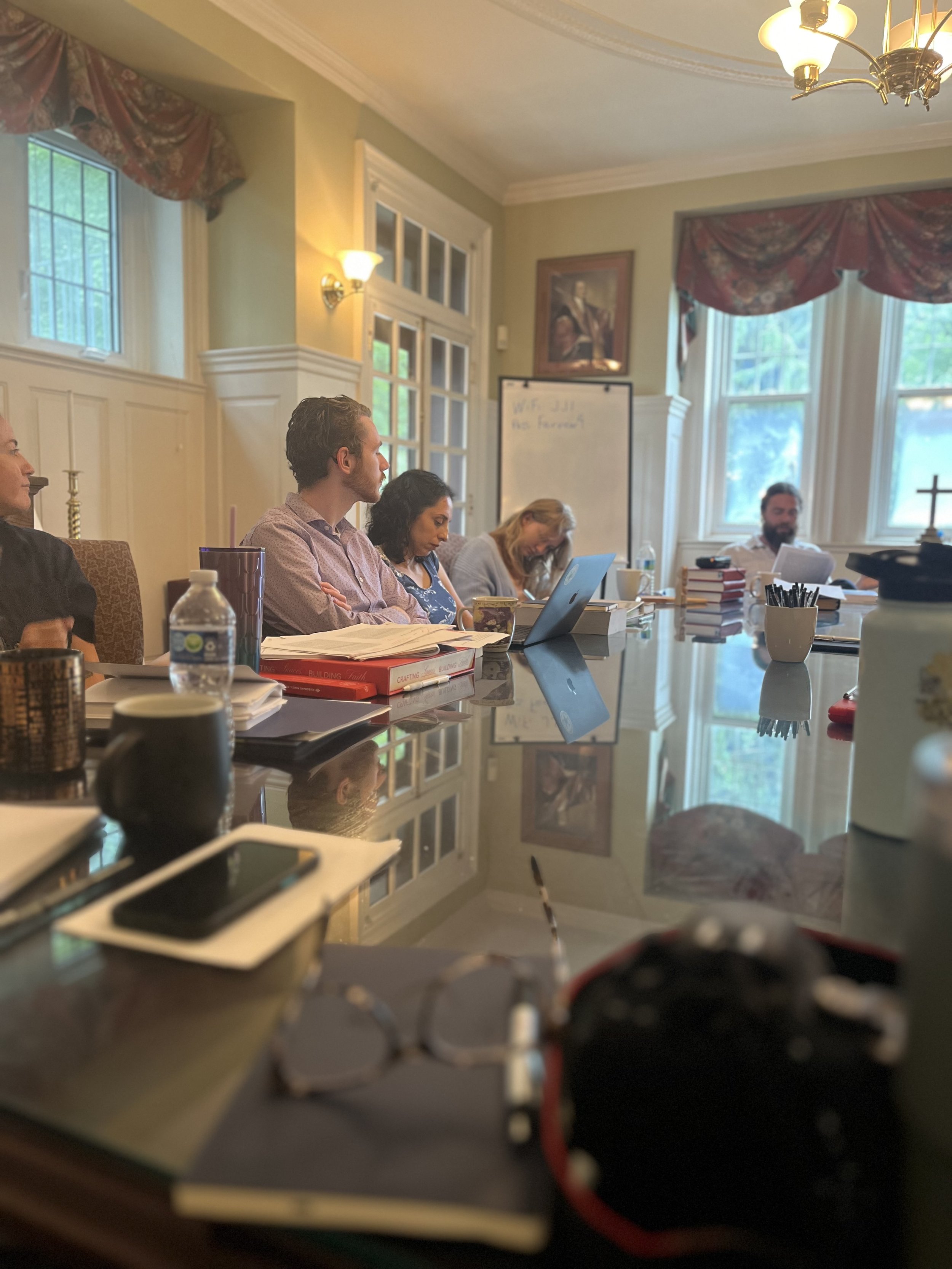Practices that Bind Together: Reflections on the 2024 Greystone ‘Wisdom of the Body’ Seminar
In a collection of essays entitled The Unsettling of America, agrarian author Wendell Berry writes that modern society is “based on a series of radical disconnections between body and soul, husband and wife, marriage and community, community and the earth.” These disconnections, he argues, add up to a disease that has crippled our culture. While many tout new cures for our modern confusion about the body, Berry maintains that the only way we can be healed is by restoring these broken connections by means of old practices: practices of work, eating, education, storytelling, and cultivating the places in which we live.
This past July, I had the great pleasure of attending Greystone’s Wisdom of the Body Seminar, a three-day event in collaboration with Greystone’s Mechanical Arts Program. For these three days, our group of thirteen gathered at Fairview Manor in Langhorne, Pennsylvania to discuss a variety of written works on the subject of embodiment alongside Scripture, to share meals and extend hospitality to one another, to pray together, to try our hands at woodcarving, and our many senses at wine tasting—to inhabit, as it were, the old practices of which Berry speaks.
Jared Hayden opened the seminar by accounting for the “crisis of anthropology” in which our culture—and indeed, the Church—finds itself today. Drawing from selections by Ephraim Radner, Neil Postman, and Robert Capon, we discussed the ways in which the vast technological development of the modern age has not only altered what Charles Taylor calls our “social imaginary,” but has also given us the practices to enact radical cultural change. As Radner argues in his book A Time to Keep, the longer lifespans we enjoy as a result of modern technology do not come without a cost. Rather, our mortality—our creatureliness (that is, our status as created beings)—has been obscured. Mr. Hayden impressed upon us the grave need for the church to recover the meaning of embodiment in the aftermath of this moral and theological upheaval.
The sessions that followed presented responses to this crisis, reminding us of those practices, given to us by God, that ground us in our bodies and help to mend the social fabric. Joshua Klein led sessions on the theology of work and craftsmanship, drawing from Radner, philosopher Albert Borgmann, and anthropologist Tim Ingold. We considered what it would look like for us to view our work—broadly speaking, “the stuff we do for one another”—as unveiling the work of God, and how to go about our work in a way that binds us together with our neighbor. Mr. Klein then gave us a brief lesson on wood grain before handing us each a knife and a stick of wood and ushering us out onto the front porch to get a feel for woodcarving.
As we sat together whittling little foxes out of birch wood, I was struck by the diversity of vocations represented there, a testament to the far-reaching scope and pertinence of a theology of embodiment: men and women, single and married, fathers, mothers, sisters, brothers, old and young. Among us were stay-at-home moms like myself, architects, tech industry workers, teachers, students, and those involved in ministries of all kinds. The opportunity to gather on the porch and learn a totally new skill together allowed us to experience first-hand what it means to be “bound together” in work. Of course, this hadn’t been the explicit purpose of the practicum; we had set out to carve wood. And yet through the shared practice of carving wood, we also practiced exactly what we had been talking about around the seminar table that morning: friendship, and perhaps some craftsmanship.
During our second day together, our sessions focused on the body as it reveals the human person. Turning our attention to the writings of Pope John Paul II, Julian Marias, and Herman Bavinck, Mr. Hayden and Dr. Mark Garcia emphasized that a consideration of the body must precede any conversation about maleness and femaleness. This is to say that, in order to adequately address questions about sexuality and gender, we must first be able to identify why the body matters. The writings of John Paul II particularly underscore the way in which our bodies bear witness to the giftedness of creation. We discussed how the phenomenology of Julian Marias complements John Paul II’s theology of the body, bringing into greater clarity the biographical—or contextual—nature of manhood and womanhood. After providing us with an introduction to Marias’s phenomenology, Dr. Garcia led the group in a wine tasting.
On our final morning together, Dr. Christina Lambert led our group through selections by Wendell Berry, asking us to consider what our everyday lives communicate about our bodies. Here we discussed the sorts of practices that honor the body and help mend the division Berry describes in his essays. It was an encouragement to be able to conclude our time together with a discussion about how we might put these ideas into practice in ordinary life—to bounce ideas off of one another, to address the potential pitfall of idealism or perfectionism, and to consider our limits as creatures. Dr. Garcia spoke to this last topic in our final session, which focused on the Sabbath. Guiding us through several passages from Scripture, Dr. Garcia emphasized the way in which the institution and practice of the Sabbath is an act of resistance against the world’s workaholic disregard for human limitation. He offered us a final charge to remember our creaturely existence, and to embrace the costly and sacrificial nature of a life lived in service to our neighbor and to our God.
But I have spoken nothing about eating. The truth is, while we enjoyed enriching conversations around the seminar table, and while I am so thankful to have had the opportunity to learn from such thoughtful speakers, what I remember most vividly is the dinners we shared together. Each night, thanks to the generous hospitality of Greg and Rachel Schaller, our group gathered at the Schaller residence to cook dinner together, share laughs over cocktails, and sit down to a candle-lit table laden with good food and good wine. These dinners were not extravagant, but they were so good—chimichurri flank steak and Cuban black beans with chianti, creamy spaghetti carbonara with gewurztraminer—made even better by lively conversation with new friends. After these dinners, over warm brownies and espresso, we got to discuss in a more casual setting what I considered the “dessert” readings from the seminar: the culinary theology of Robert Capon, and a play by T.S. Eliot. As one of the five speakers at the seminar, I had the privilege of leading a discussion on Capon’s classic Supper of the Lamb, a work which brings into focus the beauty and extravagance of God’s creation. It was thoroughly satisfying to see all of the ideas from each day’s seminar sessions come back into play in unexpected ways during these evening discussions. Each night, our conversations carried over into the kitchen, where we tackled our small mountain of dishes.
As I reflect on those three days, I see those healing practices Berry mentions in The Unsettling of America: working, eating, education, storytelling, and an attention to place. Greystone’s Wisdom of the Body Seminar was a testament to the restorative nature of these embodied practices. I am so grateful that Greystone is committed to seeing the Church reclaim a robust theology of the body and, in so doing, bolster the saints in their love and service for one another.









